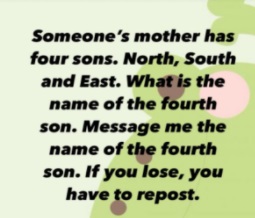As the world has been quarantined for the past year and a half, many changes have taken place to adapt to COVID-19’s safety procedures. Whether that change has to do with the person sitting in the White House or the different school standards, COVID-19 has caused the world to adapt to the modifications made during quarantine. However, the one main change that has and will continue to evolve as the younger generations get older is pop culture. Yet, this seems to have changed even more than normal due to the time spent in quarantine, as high school students Lleyton Chan and Kenton Goo claim.
First, it is important to set the groundwork for what most teenagers now believe are the most popular trends. Saugus High school student Lleyton Chan believes, “The three most popular [trends] are Tik Tok, Snapchat, and social media challenges [such as chain riddles].” And most teenagers agree with Chan, as Snapchat, Tik Tok, and even Instagram have been quickly rising in popularity, especially during quarantine, to help virtually connect with friends and family.
However, the use of these popular social media platforms has drastically changed due to COVID-19, as nowadays, social media has become a great forum to speak out about politics and one’s own opinions. Additionally, song and music trends have started to shift simply due to the different emotions that have been felt during quarantine. Valencia High school student Kenton Goo agrees and explains that “Songs with great messages [are] cherished more, [for example] Olivia Rodrigo who is greatly promoted currently.” As a result, all of these popular trends, such as social media websites and certain songs and songwriters, have adapted to match what people need during quarantine, whether that be a platform to speak out on or emotionally supportive music.
Unfortunately, these popular trends are not always beneficial to society, especially when it comes to the social aspects of life, screen time, and even trends that simply spread negative messages. Chan believes that especially with COVID-19 and more people staying at home, this has “increased the amount of time people spend on their phones and [has] decreased actual social interactions…[especially] teenagers [who] care [a lot] about connecting with other people and their appearances both online and in real life.” Hence, a large number of people, especially high school students, have become accustomed to enhancing their relationships with others through a screen rather than face-to-face. Goo agrees and emphasizes the effects of trends with negative messages, as he claims that “sometimes the things created in pop culture are not always fit for humanity’s agenda.”
Through it all, pop culture has definitely changed during quarantine, and as both Chan and Goo agree, many of these trends have led to more opportunities that spread positive messages. Hopefully, massive changes will happen in the realm of trends so that society can continue to learn to spread messages of happiness and kindness as the world slowly exits the period of COVID-19.

